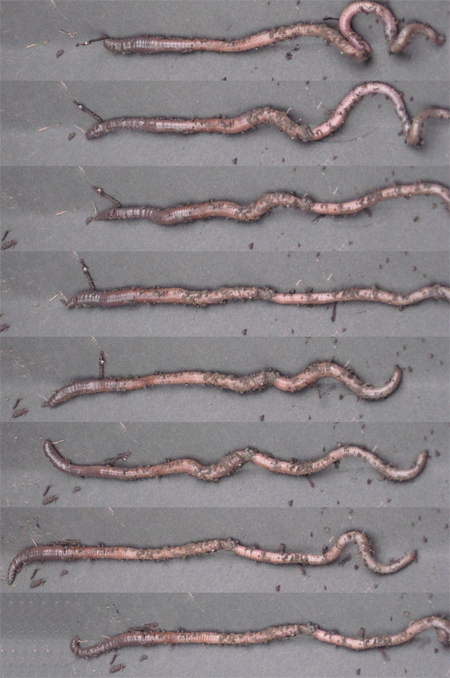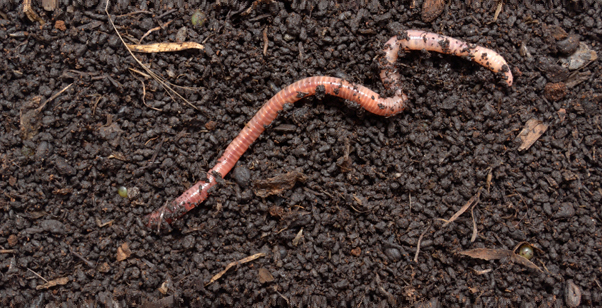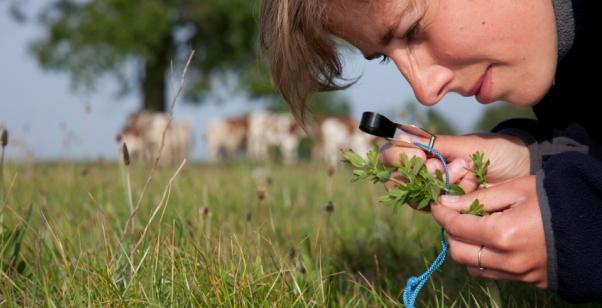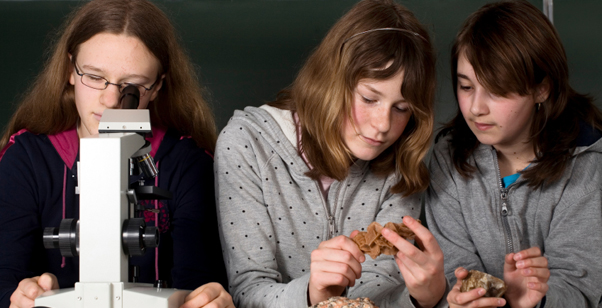Observing earthworm locomotion
Class practical
Introducing students to activities involving close study of animal behaviours is worthwhile in itself. It clearly takes time and effort to ensure that students handle the animals appropriately, make good observations, and record those observations.
If you are collecting worms as part of the OPAL survey you could use this as an extension activity for some students. (See link below: the first earthworm survey data was collated at the end of May 2009, and data collection runs until 2012.) If you’ve never heard the noise a worm makes when it moves on a piece of paper, a surprising new experience awaits you!
Lesson organisation
This will depend on whether you choose to collect some worms in advance, or include worm collection as part of the lesson. If you have the support of an assistant, perhaps a small group could go to collect worms while the rest prepare to observe them.
If you have enough worms for students to work in pairs, it is worth spending 15 minutes observing the worms’ movement (and listening to the sound of worm bristles on paper) and a further 15 minutes drawing diagrams to show how the worm moves. Use the sequence of still images provided below to direct students who are finding it difficult to focus on the stages of locomotion.
Apparatus and Chemicals
For each group of students:
Glass sheet (Note 2)
Earthworms
For the class – set up by technician/ teacher:
To collect the worms:
Spade (Note 1)
Mustard powder (optional – see Preparation)
Plastic tub (1 litre plus) plastic tub with small air holes in lid and sides containing potting compost
Health & Safety and Technical notes
Take care with glass sheets
Take hygiene precautions after digging up soil – wash hands thoroughly with soap and hot water.
1 In choosing a site to dig, be aware of the risk of picking up infections from animal faeces, and the risks from sharp buried objects. If you expose broken glass or metal objects, choose another site immediately. Ensure everyone who has handled the soil washes their hands with soap and hot water on return to the laboratory and before leaving the lesson.
2 If you use a sheet of glass it should have milled or taped edges. Students should handle it with care. Be aware of your laboratory procedures for dealing safely with broken glass in case of accident.
3 Handling worms safely (from the worms’ perspective): keep the worms in a humid, dark container, with some sphagnum moss (not sphagnum moss peat).
Ethical issues
Teachers should be careful to introduce these animals in a way that promotes a good ethical attitude towards them and not a simply instrumental one. Although they are simple organisms which may not 'suffer' in the same way as higher animals, they still deserve respect. Animals should be returned promptly to their original environment after the investigation. This supports ethical approaches for field work, where collected animals are returned to their habitat after observations have been made.
Procedure
SAFETY:
Handle sheets of glass with care. Clear up any breakages safely.
After handling soil, wash hands with soap and hot water.
Preparation
a Collect worms by digging in the soil in some part of your school grounds or a domestic garden. If you find only a few worms, the following two methods might encourage more to surface.
Method 1 Rhythmic rocking
Gather a group of 8-20 students in a circle in the area where you want to collect worms. Ask them to rock gently back and forth on the soles of their shoes, from heel to toe and back again. There is no need to stamp or make vigorous movements, just rock steadily for a couple of minutes. Worms will surface.
Method 2 Using mustard
The OPAL worm survey suggests the following technique to collect worms. Dig a pit 10 cm deep and 20 cm x 20 cm wide. Collect the worms from the soil you extract. Then add the contents of a sachet of mustard (as supplied in restaurants) to 750 cm3 of water and pour it into the pit. This encourages deep-dwelling worms to surface. This is not toxic and does not destroy grass or other plants. The mustard is a slight irritant to the worms, but preferred to other chemicals (including washing up liquid) which are more harmful.
Investigation
b Put a worm in the middle of a large sheet of paper. Observe its movements and try to describe them. Listen carefully for the sounds the worm makes on paper.
c Transfer the worm to a sheet of glass. Observe how it moves now. Try to describe any differences.
Teaching notes
There are clear diagrams of the stages of worm locomotion in most traditional biology texts.
Below are some photographs, and included in this simple ![]() Worm locomotin slide presentation (194 KB).
Worm locomotin slide presentation (194 KB).

If there is no background noise, you can hear worms moving on paper – a faint scratching sound as their bristles (called chaetae, chetae or setae) engage with the paper. Worms cannot get a grip on glass and so cannot move over it.
The sequence of movement – engaging the chetae in one segment, followed by muscular contraction to pull the rest of the body to that point – is fascinating to observe. Below is a short video.
The materials on the OPAL website help you to take this further, and carry out an extensive investigation of earthworms – identifying different species – and their environment – identifying soil types and key features of soil.
Health & Safety checked, May 2009
Web links
www.opalexplorenature.org
OPAL is a Big Lottery-funded project aiming to create and inspire a new generation of nature-lovers by getting people to explore, study, enjoy and protect their local environment. They are running five surveys across England to learn more about our environment, and would like everyone be involved. Data collection runs to 2012.
The survey pack includes record sheets and details of how to dig for worms. It also includes a detailed key to identify about 13 common species of worm. This raises pupils’ awareness of biodiversity and encourages them to look more closely at worms.
(Website accessed October 2011)
Reference
CLEAPSS materials: CLEAPSS Guide L275: 'Science with minibeasts: earthworms'
This is a comprehensive guide with details of how to collect and keep worms safely (from your point of view as well as the worms’) and suggestions for a variety of observations and investigations of worm activity.


